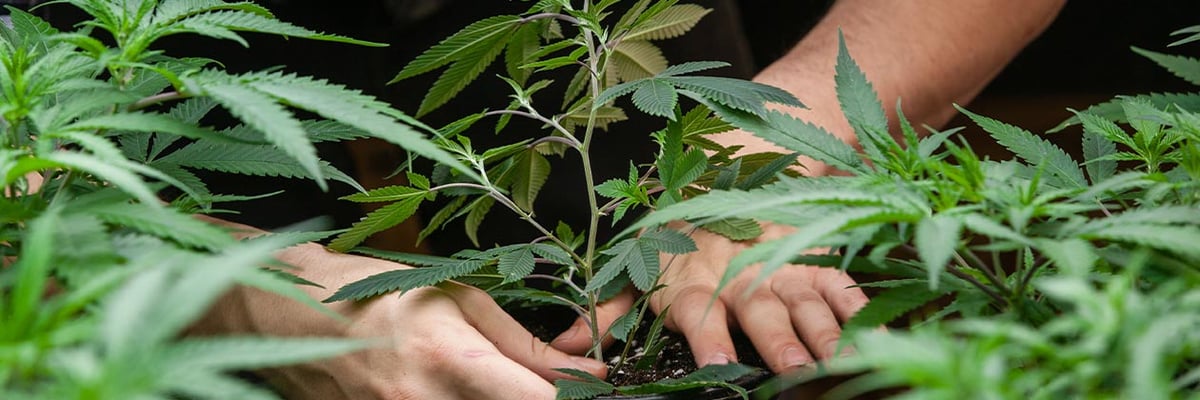Author: Ben Hartman | December 28, 2022 | 5 Min Read
Low Prices, Consolidation, and New Markets: What Will 2023 Mean for Cannabis?

Price compression in cannabis will remain a major issue in 2023 and will help drive brand share consolidation in a number of markets, according to cannabis analytics firm BDSA.
According to the firm’s end-of-the-year predictions, mergers and acquisitions in the marijuana industry will increase as large multi-state operators (MSOs) absorb other MSOs and smaller, struggling brands.
“But [price] compression really hits different markets at different times and also with different magnitudes,” Rick Maturo, Insights & Analytics Director, BDSA told Rootwurks last week.
Maturo said price compression and competition from the illicit market would be felt more heavily in more mature cannabis markets, particularly on the West Coast and in Colorado.
At the same time, the firm’s predictions state that in newer, higher growth markets like Maryland, Missouri, and Michigan, opportunities “have not gone unnoticed by MSOs and bigger Brand houses,” Maturo said.
Will only the strong survive?
In the face of increased production, lower consumption, and competition from the illicit market, price compression has been a major issue in legal cannabis in 2022. In the second quarter of 2022, Colorado Marijuana Enforcement Division figures found that the average price of cannabis had fallen 24.1% over the previous year to $3.85 per gram.
According to Leafly’s 2022 Cannabis Harvest Report, the value of cannabis crops fell by $1 billion in 2022, even as cannabis farmers grew 554 metric tons more than they did in 2021.
The report stated that “only the best, biggest, most efficient, and well-capitalized farmers will survive.”
Maturo said that in the face of low cannabis prices and the problems marijuana companies have securing funding, “if you're looking five years down the road, I'd be very surprised if you see as many small and mid-size players as you see in the market today.”
Maturo said to help weather the storm, cannabis companies are working closely with retailers on pricing strategies and recommendations for selling products while also focusing more on how to differentiate themselves.
“You're seeing a lot of brands really playing up kind of their minor cannabinoids and their more robust terpene profiles,” Maturo said, adding that “in an industry with a lot of competition, where people are just trying to beat one another on price, anything that you can say about your product to not fall into that trap of continually discounting products can go a long way for consumers.”
Price compression is only one of several predictions BDSA made for the coming year. The firm expects solvent-less cannabis products to “represent the new wave of premiumization in the edibles and concentrate categories.” At the same time, brands will move away from focusing on the levels of THC in favor of minor cannabinoids.
BDSA also predicts that COVID-19-era retail options like curbside pickup, delivery, and direct-to-customer sales are here to stay. In addition, the firm states that as consumers become more educated about cannabis products, there will be a move “away from the traditional dispensary retail experience and towards a premium CPG shopping experience, even with the stringent regulations placed on cannabis retail across legal markets.”
All eyes turn to New York
The BDSA predictions hold that New York, which legalized recreational marijuana in March 2021, will be “the biggest single opportunity for growth in the US cannabis industry in 2023.” This is despite the state’s delays in setting up recreational cannabis sales and high competition from the illicit cannabis market in New York.
“Definitely, all eyes are on New York. I think the whole Northeast Region is going to be kind of the epicenter for cannabis for the next few years,” Maturo said. He added that New York’s size and the amount of tourism in the state mean “we have a pretty winning combination there for a state market.”
Retail cannabis sales began on December 29th. Less than two weeks later, Connecticut will become the next legal adult-use market in the Northeast when recreational cannabis sales start on January 10th.
“2023 could be a breakthrough year for cannabis reform”
Speaking to Rootwurks in October, Co-Founder and Partner in the Cannabis law firm Vicente Sederberg, Brian Vicente, told Rootwurks that he believes both Pennsylvania and Ohio “stand a pretty good chance of legalizing in 2023,” with Oklahoma following in 2023 or 2024. Vicente also stated that he predicts medical cannabis could be legalized in Kansas and the Carolinas, “so 2023 really could be another breakthrough year for cannabis reform.”
Vicente predicts that low prices and oversupply should continue in the coming year, but states with limited cannabis cultivation should continue to have higher prices per pound for cannabis.
Vicente said in 2023, as more states legalize, “we just keep piling up states, and we are getting close to this kind of crucial tipping point where we have a majority of states with adult-use [cannabis].”
When asked what he thinks is the most overlooked story in cannabis as 2023 nears, Vicente mentioned social equity and how certain states like New York and Illinois “are really jumping on board to try to make sure that those who are disproportionately impacted by the Drug War can participate in this new economy meaningfully. That has begun to generally the new tone for how these things are moving forward.”
What’s on the horizon for cannabis legalization?
In Oklahoma on March 7th, 2023, voters will get the chance to have their say on Oklahoma State Question 820. If approved, the measure will legalize the possession of up to one ounce of recreational marijuana for adults 21 or older. It will also allow for the cultivation of six mature cannabis plants and will establish a taxation system for cannabis sales.
In November 2023, Ohio voters will have the chance to legalize adult-use marijuana with House Bill 38. The bill would allow adults over age 21 to purchase and possess up to five ounces of marijuana and grow up to 12 cannabis plants for personal use.
In October, Republican lawmakers in Ohio announced intent to advance marijuana legalization and to create a legal, regulated adult-use cannabis market in the state. The so-called “Ohio Adult-Use Act” would put in place “a responsible, highly regulated framework for the growth, processing, distribution, and sale of marijuana products for Ohioans 21 and over,” according to the lawmakers.
To hear more cannabis predictions for 2023, join us on January 31st for "What Did 2022 Mean for Cannabis and What Should We Expect for 2023," featuring insights from Brian Vicente of Vicente Sederberg LLP and Denise De Nardi, Chief Sales Officer at Native Roots. To save your spot, click here.
.jpg?width=878&height=460&name=Linkedin%20(5).jpg)
Contributors

Ben Hartman
From HACCP certification to the basics of hygiene, our on-demand courseware has you covered.



.jpg?width=120&height=80&name=Baby%20(1).jpg)



